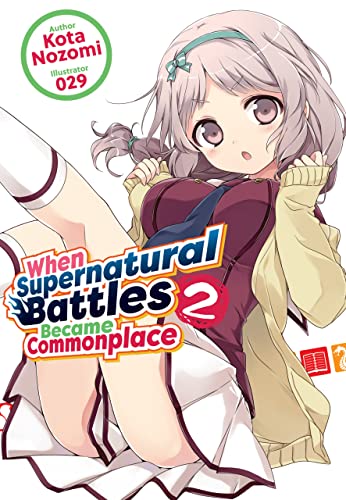By Kota Nozomi and 029. Released in Japan as “Inou Battle wa Nichijoukei no Nakade” by GA Bunko. Released in North America by J-Novel Club. Translated by Tristan K. Hill.
As always, this series tends to run on character-based comedy that is 50% decent, 30% good with a side of heartwarming, and 20% godawful. Usually the godawful part involves Andou doing something mind-numbingly stupid, but aside from one poorly-delivered euphemism that causes dangerous searches on the internet, he’s mostly fine now. It’s Sagami that gets the bulk of being awful. That said, it’s good in this case, because it’s showing off that he really IS the villain of this piece. For the most part the overarching plot of this series has been very hit and miss, and we haven’t seen that gang that attacked Hatoko since her book. But Sagami’s preening, salacious inability to see anything except as a fictional construct does make him a good antagonist. And of course this IS a fictional construct that is also a romantic harem comedy, so he gets the added aggravation of being correct. I think most readers were thinking the same thing Sagami was: in a harem of four girls, Sayumi is a distant fourth place.
Each volume has focused on one of the girls in the Literary Club, and as the cover suggests, this is Sayumi’s book. The actual present-day dilemma is fairly easy to resolve, but it also ties back to the past, so we see flashbacks, from Sayumi’s POV, of how she first met Andou and immediately did not get on with him. Unsurprising, this is Andou. In the present, the girls all present Andou with a game that they’ve been coding and ask him to play test it, which gives us a string of great humiliating gags as well as a wonderful sweet heartwarming bit at the end. As for the conflict, Andou discovers that Sayumi was going to run for Student Council President in high school, but never did… and he thinks that he’s the reason for this.
Sayumi is the most mature of the cast, meaning that thankfully we get less of the antics that we got last volume (though they’re still there, sadly, but at least Andou is NOT involved in the stupidity this time). It makes sense that her arc is resolved by simply telling Andou he’s gotten things wrong and that she doesn’t regret what happened. Of course, that’s not really what this book is doing. This is the fourth volume, so we’ve run out of heroines. It’s setting up the next arc, and doing so pretty well. All four girls are explicitly in love with Andou by the end of the book. Chifuyu doesn’t really know what it means, Hatoko knows what it means and who the “best girl” is and is ready to go to war, and Sayumi is getting advice from the devil himself. That just leaves Tomoyo, and if Sagami was here he’d no doubt say that she’s “best girl” at this point, or at least the most likely winner, if she can stop tsunning it up.
As always, I don’t recommend this book to anyone but those who are buried so far into otaku culture that they don’t really notice the bad things. If you’re that sort of person, this is a solid volume.



